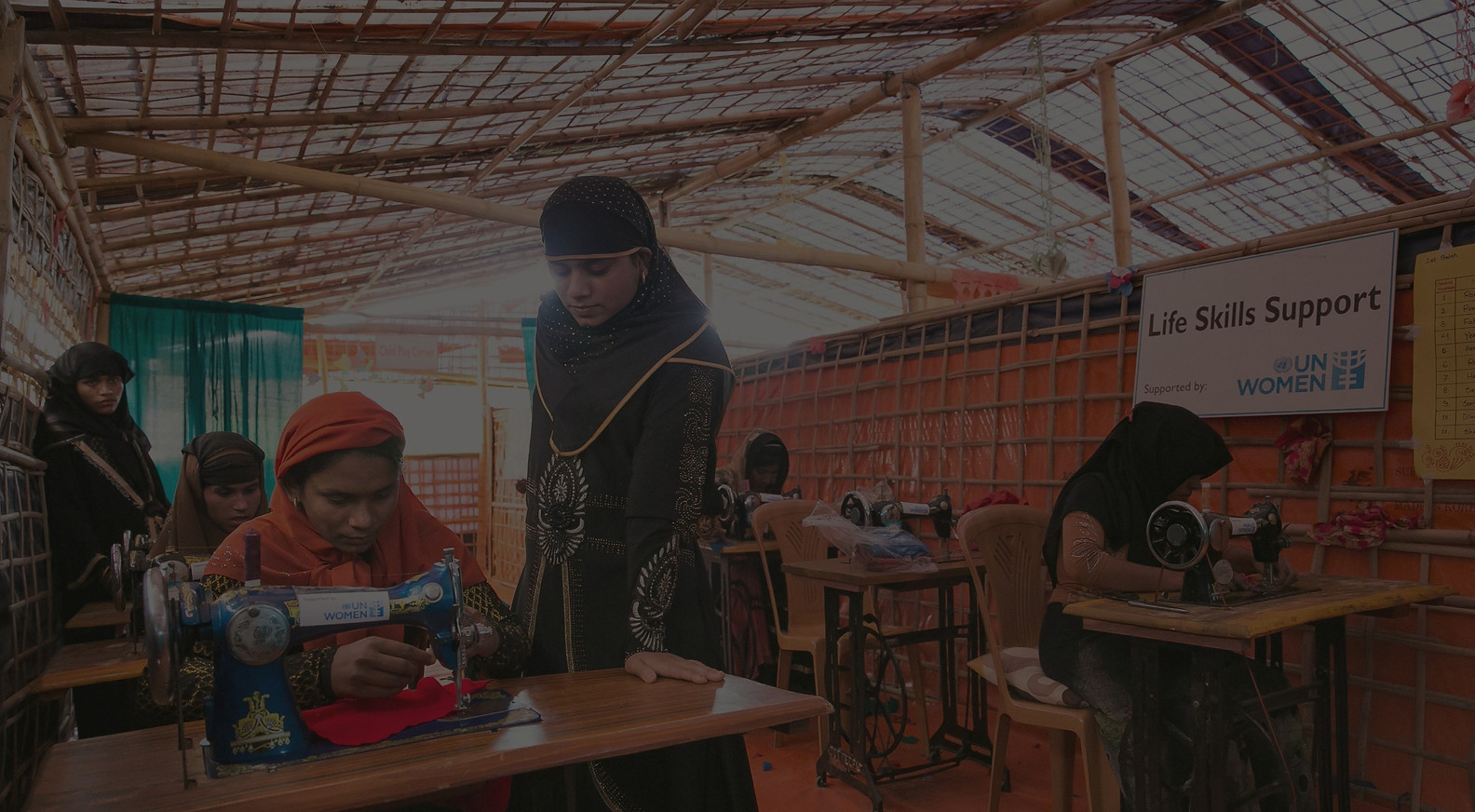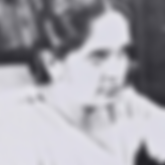There have been efforts to make changes.
But many women are still struggling
to prove themselves in the workplace.
This project is to honor their efforts,
to understand the current situations,
and to look into the future for possibilities.


GENDER EQUALITY
IN THE ASIAN WORKPLACE:
A Past of Courage, a Present of Changes,
and a Future of Possibilities
By Ha-Linh Nguyen, Xintong Ma and Amanda Kusuma Wardhani
Image source: UN Women

PART I:
A PAST OF COURAGE
Notable Milestones Throughout the Years

1994: The First Asian woman to go to space
Chiaki Mukai (向井 千秋, May 6, 1952) is a Japanese physician and astronaut. In July 1994, she became the first Asian woman to rocket into space. Her first mission was the STS-65 Space Shuttle.
Korean Women Workers Association
was founded
: 1987
Women were allowed to teach at
public schools in Japan
:1871

1885: The first Asian female doctor
Ogino Ginko (荻野 吟子,1851 – 1913), born in Saitama, was the first licensed female physician practicing Western medicine in Japan. She passed the medical practitioner's exam in 1885 and opened Ogino Hospital as the first registered woman doctor.
The first Asian female judge
: late 1920s
Tcheng Yu-hsiu (鄭毓秀, 1891–1959), was the first female lawyer and judge in Chinese history. She was the president of University of Shanghai's School of Law from 1931 to 1937.

The first educational institution for women
in Korea is founded
:1886
Ewha Haktang - 이화학당- 梨花學堂 (now known as Ewha Womans* University) was founded on May 31, 1886, by Mary F. Scranton and became the first educational institution for women in Korea. It was also the first officially recognized university in Korea. \
* Early founders of the school deliberately chose the word "womans" to respect each and every woman as an individual.

1924: Mongolia granted women's suffrage
After the Declaration of Independence in 1921, the first constitution of Mongolia was passed by the First National Great Hural on November 26, 1924, in which women were guaranteed political and social rights for the first time.

1949: All-China Women's Federation was founded
Founded on March 24, 1949, the All-China Women's Federation (ACWF, 中华全国妇女联合会) is a Chinese women's rights people's organization. The Federation is responsible for promoting government policies on women, liberating women, and protect women's rights.
:1953
The UN Convention on the Political Rights of Women was adopted
.png)
1960: The world's first female leader
Sirimavo Bandaranaike (මැතිනිය, April 17, 1916 – October 10, 2000), was the world's first female prime minister when she became Prime Minister of Sri Lanka in 1960. She served three terms as prime minister and two terms as the chief executive.
The first woman to reach
Mount Everest's Summit
:1975
Junko Tabei (田部井 淳子, 1939 - 2016) was the first woman to reach the top of Mount Everest in 1975 and, subsequently, the first woman to climb the Seven Summits (the highest peaks of the seven continents) in 1992.
Image source: CC BY-SA 4.0
.jpeg)

1979: The Convention on the Elimination of all Forms of Discrimination Against Women (CEDAW) was adopted
The Convention on the Elimination of all Forms of Discrimination Against Women (CEDAW) is an international treaty. It was adopted in 1979 by the United Nations General Assembly and came into force on September 3, 1981. Described as an international bill of rights for women, it is one of the core international human rights treaties of the United Nations treaty system.
The Beijing Declaration was adopted
: 1995
Adopted in 1995 at the Fourth World Conference on Women, the Beijing Platform for Action, or Beijing Declaration, has been hailed as the most progressive policy blueprint for gender equality and women’s empowerment

2001: Ministry of Gender Equality and Family (MOGEF) was formed in South Korea
The first Asian woman to circumnavigate Earth in an airplane
: 2016
Wang Zheng (王争, born December 25, 1972), is an airline pilot and an FAA Certified Flight Instructor (CFI) in the United States. In 2016, she became the first Asian woman to circumnavigate Earth in an airplane and the first Chinese to fly solo around the world.
Image source: CC BY-SA 4.0

PART II:
A PRESENT OF CHANGES
It's been 141 years since Ogino Ginko became the first
Asian female doctor practicing Western medicine,
99 years since Mongolia became the first Asian country to grant women's suffrage,
and 42 years since the Convention on the Elimination of all Forms of Discrimination Against Women came into force.
During that time, we've seen improvements regarding women's rights in general
and gender parity in the workplace in particular.
Women now can have more access to education and job opportunities.
Yet, changes are still slow and vary across countries in the region.

Image source: UN Women
Closing the Gender Wage Gap


Meet the Women
and hear their stories
Name: Jiayi Lu (Lucy)
Alma Mater: Shanghai International Studies University
Occupation: Freelance Interpreter
After graduation, Lucy determined to pursue a career as a full-time interpreter. But soon she realized: the job opportunities for female interpreters are not as many as she expected, despite a larger proportion of female graduates from translation and interpretation major.
Name: Sam Li (name changed)
Work position: Lieutenant in the Armed Forces
The increased number of women in different Asian Armed Forces represents positive signals and great improvements in terms of women’s roles and contributions in the military field.
Sam Li, 23 years old, is one of them. Having worked in her country’s Armed Forces as a female soldier for five years, Sam has special interests in the promotion of gender equality in the army, especially in the aspects relating to diversity, equity, and inclusion.

Jittirat Tantasirin, CEO of ATTA. Autohaus, one of Thailand’s authorized Mercedes-Benz dealers, works with UN Women to leverage technology to revolutionize retail sales models and expand women’s place in the automotive industry.
Image source: UN Women
Persistent Challenges
Clashes of Interests and Values
“Why should I care about gender equality? Can it help buy milk for my child?”
“Why should I care about gender equality? Will it bring more profits to my company?"
“People have different priorities, and the priorities of many workers are not the different treatments they receive compared to the opposite gender.”
ender discrimination in many Asian countries has thousands of years of deep cultural and social roots, which some simple laws and policies issued by a distant legislative body of the government cannot instantly solve. In the process of eradicating mistreatment toward women, especially in the workplace, the roles of workers, companies, and social organizations are crucial as they are the direct stakeholders, hence can create direct impacts. However, while the three parties should work together to promote, achieve and sustain gender equality in the workplace, the differences in their priorities and interests can cause great hindrances to the process.
“Why should I care about gender equality? Can it help buy milk for my child?” This is one of the common answers Ms. Tran Hong Diep often hears when working with female workers to improve gender equality in general and workplace gender equality in particular.
Ms. Diep is a Vietnamese gender expert and trainer with around 20 years of experience working for international and local non-governmental organizations (NGOs). Being a facilitator for gender training workshops is one of her expertise. As a trainer, she’s been giving lectures to and facilitating many workshops on the topic of gender issues in different communities, which include workers in industrial zones. One thing she took notice of from those training sessions was how indifferent many women could be toward the issue of gender-based mistreatment.
“If it’s a workshop on financial management or investment, you can expect a huge crowd. But if it’s a workshop on gender issues, only a few will attend,” Ms. Diep commented on the differences in the popularity of workshops at industrial zones or companies. “People have different priorities, and the priorities of many workers are definitely not the different treatments they receive compared to the opposite gender.”
G
ccording to the World Bank's regional report, in many countries in Asia, a large proportion of workers earn less than the minimum wage levels set by their governments. The problem has gotten worse with the spreading of the Covid-19 pandemic over the last three years. In Vietnam, it is reported that a third of the total workers find it difficult to support their basic necessities and have to loan money. The reality is even harsher for female workers when their unemployment rate due to the pandemic is higher than that of men.
For these people who are struggling to make ends meet and buy the most basic necessities in life, including food, gender parity would not be something on the top of their heads. It is hard to think about the sense of respect or fairness when they cannot even fulfill the lowest level in the hierarchy of needs. The benefits that gender equality is supposed to bring to them sound very abstract and far away.
“We know that gender equality will improve workers’ lives, even in terms of economics. But we haven’t been able to effectively communicate that message,” Ms. Diep commented on how the NGOs failed to address the interests of the workers, which in turn reduced the effectiveness of gender training workshops.
he same problem arises in the relationship between NGOs and companies. Companies are among those who have the most direct influence over the working conditions of each and every worker. And gender parity can’t be achieved without cooperation from employers. Yet, achieving such cooperation has always been such a difficult task.
“NGOs have been going around talking about how companies should encourage more female participation for a better society, but we often fail to address one of their most critical concerns: how will that add to the profit of the companies?”
Ms. Diep pointed out that one of the wrong mindsets from the side of gender equality activists is that they often see firms and companies as enemies on the opposite side of the battle. Companies are often thought of as lacking competencies to control gender discrimination, or in some worse cases, reinforcing such biased behaviors. This type of mindset not only leads to failure in making companies understand the benefits brought by gender equality to the companies' overall performances but also makes them feel reluctant to cooperate.

A
T
Ms. Diep in a training workshop on "Gender Equality and Responsible Business" with small business owners
Image source: For Vietnamese Stature Foundation's website
"We [the NGOs] need to think from the business owners' perspectives first. We need to show them how gender equality can benefit their businesses economically," shared Ms. Diep about how firms and social organizations can join hands in the process of improving gender inequality in the workplace for female work.
A Promising Change of Attitude



hile the clash of interests continues to be one of the most persistent challenges, some recent changes show signals of an improved relationship between non-governmental organizations and corporates. Two sides have been more willing to meet in the middle ground and allowed more room for cooperation.
Regarding this change, Ms. Tran Hong Diep shared: “The role of businesses [in promoting gender equality] has been emphasized more in recent years.”
W
In recent years, we’ve seen more and more collaborative efforts from both NGOs and business firms to implement campaigns on gender equality.
In the last two months of 2022, TH group, one of the leading companies in the dairy industry in Vietnam, collaborated with UN Women and For Vietnamese Stature Foundation (VSF) to launch the campaign “Let’s Orange with TH”. The campaign aimed at raising public awareness about gender-based violence, including gender-based violence in the workplace.
The campaign "Let's orange with TH" also built a loan support fund to improve the livelihoods of women who are victims of gender-based violence. For every orange-colored product purchased at TH true mart stores, VSF donated VND 630 to the fund.

Employees at TH Group and its member companies decorated their offices in response to the campaign.
Image Source: For Vietnamese Stature Foundation's Facebook Page, Nguyễn Hà Linh
Another notable collaboration is between UN Women and LinkedIn India to implement the LINK Women Project, which was announced on June 15, 2022. The project aims at cultivating employability skills, focusing on digital skills, for marginalized women; thereby creating more job opportunities for women in Asia and the Pacific.
).png)
Graphic: Nguyễn Hà Linh

“We are delighted to partner with UN Women to jointly work towards improving female representation and professional diversity across the region’s workforce by investing in the upskilling and economic empowerment of women.”
Mr. Ashutosh Gupta, India Country Manager of LinkedIn
Image Source: UN Women
he changing mindset from both sides is one of the core contributors to this new level of cooperation. From the civil sector side, they have been trying to consider the interests of corporates. From the other end, businesses start to acknowledge the benefits that could be brought about by gender parity in the workplace.
“Previously, I thought gender equality was something very theoretical and inapplicable to the business world. But now I can see the role of it in helping me achieve my business values,” was the sharing from a business owner, one of the participants at Ms. Diep’s training workshop on “Gender Equality and Responsible Business”.
T
PART III:
A FUTURE OF POSSIBILITIES

The situation of gender parity in the Asian workplace has shown more promising signs in recent years. Here are the three trends that are expected to shape the landscape of gender equality in the Asian workplace in the next 10 years, according to Ms. Tran Hong Diep, a gender expert with 20 years of experience.

At the moment, NGOs and other actors in the civil sector are mostly collaborating with multinational firms or firms that target the international market. These firms are subject to international standards regarding women’s rights and gender equality in the workplace, so they would have more incentives to cooperate. In many Asian countries, the existing laws are yet to be strict on gender-based discrimination in the workplace, so local companies don’t have the same amount of incentives.
However, according to Ms. Diep, local firms, which outnumber international businesses, will be the focus of NGOs working on improving gender disparity in the working environment. The partnerships with those firms are expected to thrive in the next few years.
In the very beginning, local NGOs lacked the knowledge, experience, and facilities needed to carry out big-scale social projects. They needed guidance from major international NGOs when implementing early campaigns. But as they have gained more experienced and become more mature over time, they are slowly taking over the initiating position.
“The presence of international NGOs is decreasing and will become less visible in the upcoming years,” Ms. Diep commented.
The more intensive involvement of local organizations is expected to help tailor the projects better for each country's situation and ensure the project's sustainability.


“There’ll be more projects aiming at changing the gender norms and gender roles targeting children, including those under the age of 5, in the future,” Ms. Diep said. “We want to change the mindset of choosing career paths based on genders of children from an early age.”
Gender role assigning specific jobs for men and specific jobs for women is one of the barriers preventing society from reaching gender parity in the workplace. By implementing projects to educate younger children, we can expect a new generation with more freedom of career choices and a working environment with more gender balance in the future.
Traditional culture is one of the reasons for gender-biased treatment in many countries in Asia and is also among the hardest challenges to tackle.
In recent years, there have been attempts by historians and cultural experts to offer new perspectives to look into the past. They no longer criticize traditional values as remnants of feudalism that need to be eliminated, instead, they highlight some progressive traditions that have been existing for hundreds of years.
They want the public to see that gender equality isn't something extremely new but something that has already existed in our cultures.

What can we do?
What roles young people have
in improving the current gender inequality?
“
Only by really interrogat[ing] into the different roles that different stakeholders have in these large processes of reinforcing and reproducing gender discrimination can we really understand the role of this specific group of young people.
”

What should we do to promote gender equality in the army?

“
Having more women enter and participate in the conversation will raise the visibility of our needs and [...] educate our male counterparts to engage with us in a respectful and professional manner.
”
Is there anything you want to say to other women?
“
Be professional and passionate, the best version of yourself, seize every opportunity, and be courageous.
”



)%20(1).jpg)